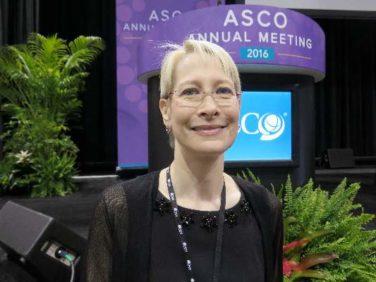AT OARSI 2015
SEATTLE (FRONTLINE MEDICAL NEWS) – When it comes to managing osteoarthritis, clinicians can use their interactions with patients to tap into a powerful placebo effect, according to Dr. Paul Dieppe, a professor of health and well-being at the University of Exeter, England.
“I am particularly excited to have the opportunity to talk to you about a phenomenology that I think is amongst the most important within medicine and an area that those of us interested in osteoarthritis could really exploit,” he said at the World Congress on Osteoarthritis. “We don’t have a treatment that’s better than placebo, so let’s use placebo.”
In the clinical trial context, the placebo effect – the response seen from giving a sham or dummy treatment, or in essence, doing nothing – has an effect size of about 0.5 for alleviating pain and stiffness from osteoarthritis (Ann. Rheum. Dis. 2008;67:1716-23). “That’s an effect size which is quite a lot bigger than the effect size of most of the standard interventions that we use, be they drug therapy, physical therapy, whatever. It’s not as big as joint replacement, although there we don’t have the appropriate data. But it is bigger than pretty much everything else. So ‘nothing’ is efficacious,” Dr. Dieppe commented.
On the other hand, effectiveness in the real-world setting is unknown and would require large pragmatic trials or Big Data analyses using registries. “But I think the effectiveness of ‘nothing’ is much, much greater than its efficacy in the very artificial circumstance of a clinical trial,” he said, a viewpoint based on his experience both as a clinician and as a patient with knee osteoarthritis.
“I prefer to call [the placebo effect] a healing response, and I’m not trying to be provocative using that term because I think we do have innate healing abilities in our bodies. I think that’s an evolutionary demand, and good interactions can activate that,” Dr. Dieppe maintained.
Compelling evidence suggests that healing does indeed work ( Explore [NY] 2015;11:11-23 ). “We think that it’s mediated by focused attention with good intention of sensitive people,” he said. “Maybe that’s what a lot of you as therapists are actually doing. Maybe that is the basis of much of what we call the placebo effect.”
Clinicians should also be aware of the nocebo effect, what Dr. Dieppe referred to as the placebo effect’s evil twin, as it can negatively influence outcomes and is stronger ( Am. J. Med. 2015;128:126-9 ). “The fact is that doing nothing … can and often does make our patients much worse. This is most likely to occur when one or both people in a consultation are feeling unsafe or anxious. … A lot of what we do in modern health care seems designed to make people anxious and to make them worse,” he elaborated at the meeting, which was sponsored by the Osteoarthritis Research Society International.
Many of the leading theories about the placebo and nocebo effects postulate that they relate to factors such as expectations or the release or blockage of natural endorphins. “These theories are basically saying that this is all about what’s going on in the brain of the patient,” Dr. Dieppe commented. “I think that’s wrong. … It’s missing the point, completely, because the point is that this is about the quality of interactions between individuals. We are social beings, we are evolved as social beings, and our social interactions control a lot of what happens to us, not only psychologically but physiologically.”
He pointed to theories that instead focus on interactions, such as one pertaining to the concept of validation and invalidation ( J. Clin. Psychol. 2006;62:459-80 ). “This theory goes beyond empathy and compassion, which are the usual sort of things evoked in this context, because you can be empathic and compassionate as much as you like, but if the patient in front of you doesn’t know you are being empathic or compassionate, then it’s no use at all. So validation, invalidation is more about have you successfully communicated that empathy and compassion to the other person or not. If you have, the person feels validated, they feel you genuinely do understand them, and you do genuinely care about them. If they are invalidated, they feel you haven’t understood them, and you don’t really care.” He added, “It depends very much on your behavior, as much as on what you say. Communication specialists tell us that 80% of communication to people is nonverbal.”
Another relevant theory here is the polyvagal theory of social interaction, which proposes that in addition to being hardwired for a fight or flight response, the autonomic nervous system is hardwired for a nurturing response ( Cleve. Clin. J. Med. 2009;76 Suppl 2:S86-S90 ). Activation of this response has a calming physiologic effect and influences how messages are heard. “This nurturing response … is linked to communication strategies, so that you have to feel safe to be able to communicate well with another person,” Dr. Dieppe noted.
Taken together, these theories on interactions help explain “how we can make people better, how we can make people worse with ‘nothing,’ ” he maintained. “Of course, it’s not nothing – it’s the totality of our behavior with another person, and it’s crucial. And it can, in extreme cases, positively activate the innate healing response, or it can, as we often do sadly in clinical practice, activate an invalidation, fight-or-flight response, and make everything a lot worse.”
“There are colossal implications about how we behave when we are with patients,” Dr. Dieppe concluded. “I think basically, it’s just about our ability to be present for another human being in a nonjudgmental way. And that’s difficult, but that’s what we need to be able to do.”
rhnews@frontlinemedcom.com



